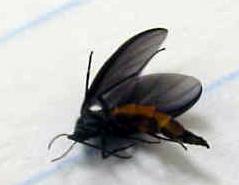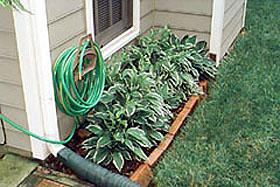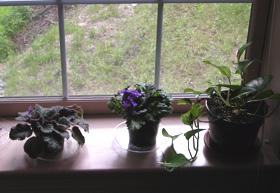Introduction
Fungus gnats can be a serious pest in greenhouses where they can damage the roots of plants. They also feed on fungi and decaying plant material. For more information about fungus gnats as pests of ornamentals, consult Darkwinged Fungus Gnats. Occasionally, fungus gnats become a nuisance indoors in both residential and commercial buildings when adults emerge in large numbers from potted plants or some other chronic source of moisture (and subsequent mold growth). Adults are attracted to lights and are often first noticed at windows or light fixtures.
Identification
Adult fungus gnats are about 1⁄10 to 1⁄8 of an inch long, slender, somewhat mosquito-like, with dark-colored antennae and delicate with long legs. Some species are gray to black in color, while others are orange-to-yellowish in color. Identification can be made by the vein patterns in the single pair of wings, which may be smoke-colored or light in color. One of the most common species, the darkwinged fungus gnat has eyes that meet above the base of the antennae. The eggs are extremely small, oval, smooth, shiny white and semi-transparent. Larvae (maggots) are legless, thread-like, white, with black heads and 1⁄4 inch long when fully developed. They are somewhat transparent, so food in their guts can be seen through the body wall. The larvae spin silk-like cocoons in which they pupate.
Life Cycle and Habits
Fungus gnats develop in moist, shaded areas in decaying organic matter such as leaf litter. They complete their life cycle in about four weeks depending on temperature and other environmental conditions. With indoor infestations, there will typically be continuous reproduction and overlapping generations with all life stages likely to be found throughout the year. Adult fungus gnats live about 7 to 10 days. The female deposits 100 to 300 eggs in batches of 2 to 30 in decaying organic matter. Eggs hatch in 4 to 6 days; larvae feed for 12 to 14 days. The pupal stage lasts about 5 to 6 days. Outdoors, following heavy rainfall, the larvae may move in groups from mulched areas to "high ground" such as patios, sidewalks, etc. Their collective seemingly synchronized movement can resemble the movements of a snake (Figure 2)
Correcting Fungus Gnat Problems
Non-Chemical Control
The key to solving indoor fungus gnat problems is to find and eliminate the breeding source, i.e., find the area(s) of excess moisture.
Outdoors
If the problem is seasonal, e.g., it declines or totally disappears in the fall/winter, then flies are probably breeding outdoors. The most likely problem spots are landscaped and/or heavily mulched areas or lowlying areas in the yard that remain extremely wet following heavy rainfall, overwatering, or a leaking outdoor water spigot (Figure 3). Correcting the problem may be a matter of repairing a leak or correcting drainage problems in that area (e.g., grading and/or contouring the area or using gravel to allow water to drain properly).
Indoors
If the problem is relatively constant regardless of the time of year, then the source is more likely to be originating indoors or at least it is associated directly with the building rather than an outside (landscaped) source.
- Potted plants and other types of interiorscaping are often the culprits (Figure 4). Check plants to see if the soil is excessively wet. Drain any excess water from the dish/container below flower pots. If the weather permits, move the plants outdoors or allow the soil to dry (not to the point where plants will wilt). Then, simply add a day (or more) between regular watering and the problem should decline.
- Check areas where moisture is commonly found: kitchens, bathrooms, utility rooms (e.g., a leak in the waterline to a clothes washer), as well as crawlspaces (which are more common in residential buildings).
- Check other areas where leaks may occur as a result of storm damage or poor maintenance, e.g., roofs, crawlspaces, and walls and floors near exterior wallsss (Figure 5). This is particularly important on commercial buildings with flat membrane-covered roofs. Water leaking through a break in the roof (whether caused by damage or improper sealing) will result in the underlying insulation becoming wet and possibly moldy creating an ideal habitat for fungus gnats. Inspect the roof and ceiling below for signs of leaks.
- Try to determine what areas of the building have the highest numbers of gnats. Check window ledges, light fixtures, etc. Fungus gnats are mobile and are more likely to move towards a nearby source of light. Pest control companies use Insect light traps to help determine which areas are most heavily infested.
- Correcting a moisture problem and cleaning the area should eliminate the fungus gnats fairly quickly.
Insecticides
Adult fungus gnats are killed easily with sprays containing pyrethrins or aerosols labeled for use against "gnats" or "flying insects." However, these chemicals are a very short-term and very temporary solution. Unless you can access and treat the area where larvae develop then, once the chemical dissipates, more flies are likely to appear. Similarly, treating outdoor areas may produce mixed results particularly if you cannot identify the key areas that are infested with fungus gnats. Indoor plants or interiorscaping that is difficult to remove can be treated with a number of pesticides that are listed in the North Carolina Agricultural Chemicals Manual. Among the less hazardous products available to consumers are those containing Bacillus thuringiensis var. israelensis (Gnatrol, Vectobac). These products can be applied as soil drenches to potted plants indoors or to outdoor areas. Outdoor landscaped areas can also be treated with beneficial nematodes. Regardless of how "safe" you consider any pesticide or insect control product, always read the label and follow directions and safety precautions.
Publication date: May 20, 2016
Revised: May 12, 2021
Recommendations for the use of agricultural chemicals are included in this publication as a convenience to the reader. The use of brand names and any mention or listing of commercial products or services in this publication does not imply endorsement by NC State University or N.C. A&T State University nor discrimination against similar products or services not mentioned. Individuals who use agricultural chemicals are responsible for ensuring that the intended use complies with current regulations and conforms to the product label. Be sure to obtain current information about usage regulations and examine a current product label before applying any chemical. For assistance, contact your local N.C. Cooperative Extension county center.
N.C. Cooperative Extension prohibits discrimination and harassment regardless of age, color, disability, family and marital status, gender identity, national origin, political beliefs, race, religion, sex (including pregnancy), sexual orientation and veteran status.





